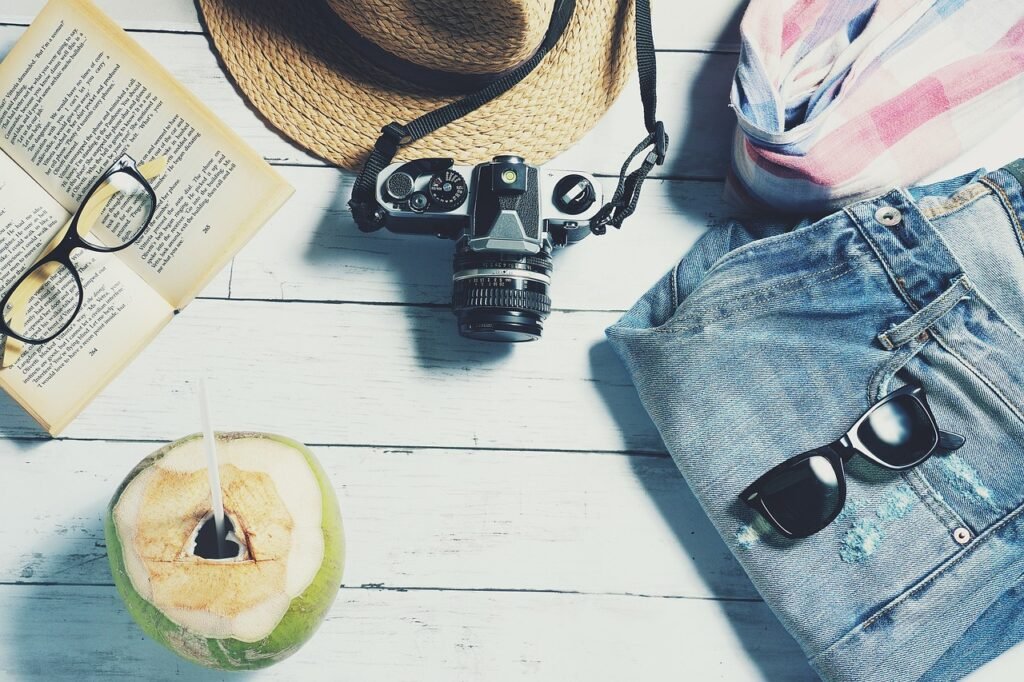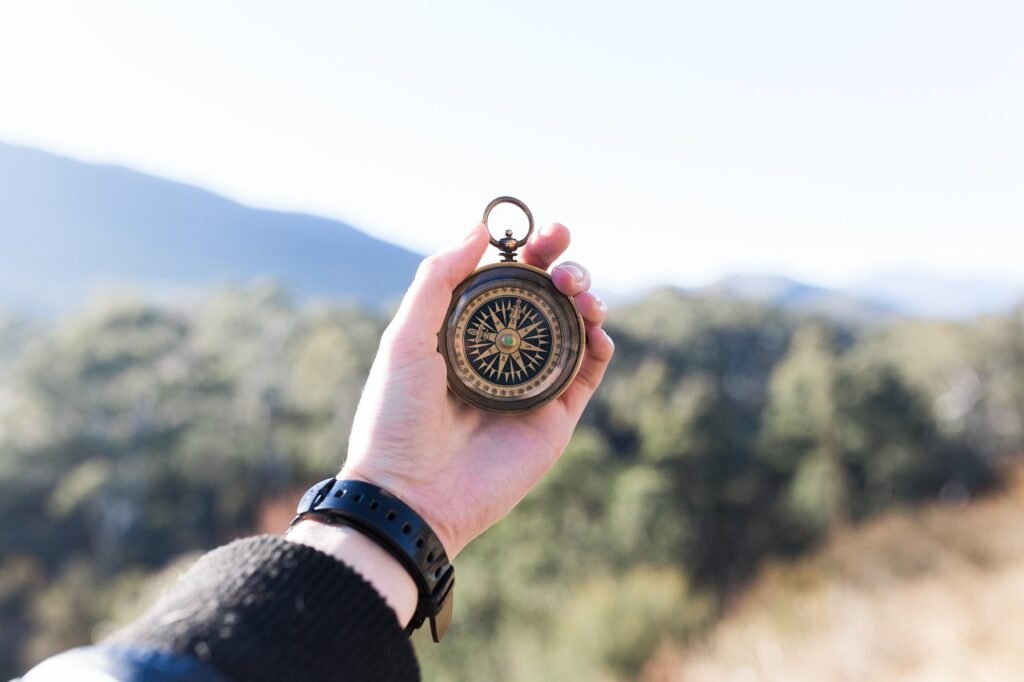Taking your first solo trip can be one of the most exciting and liberating experiences of your life. Whether you’re heading out on a weekend getaway or taking a longer adventure, traveling alone opens your mind up to a world of possibilities.
It’s an opportunity to explore new places on your terms, discover who you are without outside influence, and build confidence along the way. But, like any new experience, it can also be a little intimidating.
In this guide, we’ll walk through everything you need to know to prepare for your first solo trip, from planning to staying safe, so that you can make the most of your journey with confidence.
1. Choosing Your Destination
Choosing the right destination is key to a successful solo trip. Since it’s your first time traveling alone, you’ll want to pick a place that feels manageable, safe, and exciting.
Start Small
For your first solo trip, consider picking a destination that’s relatively close to home or within your comfort zone. A nearby city, national park, or well-known tourist destination can be a great starting point.
The idea is to ease into solo travel without feeling overwhelmed by a completely unfamiliar environment.
Consider Your Interests
What excites you most about travel? Is it exploring nature, immersing yourself in new cultures, or trying new foods? Choose a destination that aligns with your interests.
For example, if you love hiking and the outdoors, a trip to a national park might be a perfect choice. If you’re more of a city person, exploring a new city with museums, restaurants, and historical landmarks could be the way to go.
Safety First
Safety is always a priority when traveling solo. Some places are better suited for solo travelers than others.
For your first trip, consider destinations that are known for being safe, easy to navigate, and friendly to tourists. Countries like Iceland, Japan, and Canada are often ranked as top destinations for solo travelers due to their welcoming environments and low crime rates.
If you’re staying within the U.S., cities like Portland, Austin, or Charleston can offer a mix of solo-friendly experiences.
2. Planning Your Trip
Once you’ve chosen your destination, it’s time to start planning your trip. Solo travel requires a bit more thought than traveling with friends or family, but with the right preparation, it’ll be smooth sailing.
Research Your Destination
Before you go, take some time to research your destination. Look up things like local customs, transportation options, and must-see attractions.
It’s also helpful to read blogs or guides written by other solo travelers to get a sense of what the experience will be like.
Plan Your Itinerary (But Leave Room for Flexibility)
While it’s important to have a general idea of what you want to do and see, solo travel is all about freedom. The beauty of traveling alone is that you can change your plans at a moment’s notice if something else catches your eye.
Plan a few key activities or sights you don’t want to miss, but leave room in your schedule for spontaneous adventures. You never know what you’ll discover when you have the freedom to explore on your own.
Book Accommodations in Advance
One thing I learned early on in my solo travel journey is that it’s always a good idea to book your accommodations in advance. Knowing where you’ll be staying gives you peace of mind, especially when arriving in a new place.
For solo travelers, hostels, boutique hotels, or Airbnb rentals are often great options. Hostels, in particular, are a great way to meet other travelers, and many of them offer private rooms if you want your own space.
3. Packing for Solo Travel

Packing for a solo trip can feel a little different than packing for a group trip. Since it’s just you, you’ll want to strike a balance between packing light and having everything you need.
Pack Light
One of the advantages of traveling solo is that you only have to worry about your own stuff, so it’s easier to pack light. A carry-on bag is often enough for short trips, and it saves you from the hassle of checking luggage.
Think about packing versatile clothing that can be layered or mixed and matched. You’ll want to bring clothes that are appropriate for your destination’s weather but also comfortable for long days of exploration.
Don’t Forget the Essentials
When traveling alone, it’s even more important to be self-reliant. Be sure to pack a small first aid kit with basics like band-aids, pain relievers, and any prescription medications.
A portable phone charger is a must, especially if you’re using your phone for maps and photos all day. And always carry a copy of your important documents (like your passport or driver’s license) in case of emergencies.
Keep It Organized
One of the best packing tips for solo travelers is to stay organized. Use packing cubes or small bags to keep your clothes and gear separated. This will help you quickly find what you need without digging through your entire bag.
Keeping your belongings in order can make solo travel feel a little more manageable, especially when you don’t have anyone else around to help.
4. Solo Safety Tips
Safety is one of the biggest concerns for first-time solo travelers, and it’s completely normal to feel a little apprehensive. The good news is that with a few common-sense precautions, solo travel can be just as safe as traveling with a group.
Share Your Itinerary
Before you leave, share your travel plans with a friend or family member. Let them know where you’ll be staying, and give them a rough outline of your itinerary. This way, someone always knows where you are in case of an emergency.
Stay Aware of Your Surroundings
One of the best ways to stay safe while traveling solo is to always be aware of your surroundings. Pay attention to the people around you and trust your instincts.
If something feels off or uncomfortable, it’s okay to leave. Solo travel is about enjoying your experience, and that means prioritizing your comfort and safety.
Blend In (If You Can)
When exploring a new place, try to blend in with the locals. Avoid flashy clothing or accessories that could make you stand out as a tourist, and try to be respectful of local customs.
This will not only keep you safer but also help you have a more immersive and authentic travel experience.
Stay Connected
Make sure your phone is fully charged before heading out for the day, and consider purchasing a local SIM card or an international phone plan if you’re traveling abroad. Having a reliable way to stay in touch and access maps or transportation apps is crucial when traveling solo.
5. Meeting New People
One of the most common concerns about solo travel is the fear of feeling lonely. But here’s the thing: traveling alone doesn’t mean you’ll always be alone. In fact, solo travel often leads to more opportunities to meet new people.
Stay in Social Accommodations
If you’re open to meeting other travelers, staying in social accommodations like hostels, guesthouses, or even co-living spaces is a great way to connect with fellow adventurers.
Many hostels offer common areas where travelers can hang out, and some even organize group activities like walking tours or pub crawls.
Don’t be afraid to strike up a conversation with fellow travelers—you might make some new friends along the way.
Join Group Activities
Even though you’re traveling solo, that doesn’t mean you have to do everything alone. Many cities and destinations offer group activities like guided tours, cooking classes, or hiking excursions.
These activities are a great way to meet people who share your interests, and they also provide a fun and safe way to explore your destination.
Use Social Media and Travel Apps
In today’s digital age, there are plenty of ways to connect with other travelers before you even arrive. Social media platforms like Instagram and Facebook have groups dedicated to solo travelers.
There are also apps like Meetup or Couchsurfing allow you to join events or meet locals. You can also check if there are any travel communities specific to your destination.
6. Navigating Your Solo Trip

One of the most empowering aspects of solo travel is the sense of independence that comes with navigating a new place on your own. But, of course, there are a few things you’ll want to keep in mind.
Learn Basic Phrases
If you’re traveling to a country where you don’t speak the language, learning a few basic phrases can go a long way. Phrases like “hello,” “thank you,” and “where is…” can help you get by, and locals will appreciate the effort.
Even if you stumble through a few words, it often opens the door to more positive interactions.
Use Maps and Transportation Apps
Google Maps, Apple Maps, and other navigation apps are your best friends when it comes to getting around a new city.
Download offline maps of your destination in case you don’t have access to Wi-Fi, and make sure you’re familiar with local transportation options like buses, trains, or ride-sharing apps.
Give Yourself Time to Get Lost
One of the joys of solo travel is the freedom to explore at your own pace. If you have time, don’t be afraid to “get lost” in your destination.
Wander through a new neighborhood, explore local shops, or find a quiet spot to people-watch. Some of the best travel memories come from the unplanned moments.
7. Embracing the Solo Experience
Solo travel is more than just visiting a new place—it’s about experiencing the world on your own terms and gaining a deeper understanding of yourself.
Take Time for Self-Reflection
Traveling alone gives you a unique opportunity for self-reflection. Whether you’re sitting in a café, hiking through nature, or relaxing on the beach, take some time to be present and enjoy your own company.
Solo travel can be a powerful way to learn more about yourself, your strengths, and your preferences.
Challenge Yourself
Solo travel often comes with challenges, whether it’s navigating a new city, trying new foods, or making decisions on your own. Embrace these challenges as opportunities for growth. You might surprise yourself with how capable and resilient you are.
Capture the Moment
Don’t forget to document your solo journey! Take photos, write in a travel journal, or share your experiences with friends and family. Your first solo trip is an adventure you’ll want to remember for years to come.
Final Thoughts: Enjoy the Freedom
Your first solo trip is a chance to explore the world on your terms, build confidence, and create unforgettable memories. It might feel intimidating at first, but with the right preparation and mindset, it’ll be one of the most rewarding experiences of your life.
Traveling solo doesn’t mean you’re alone—it means you have the freedom to follow your own path. So, take a deep breath, embrace the adventure, and enjoy the incredible journey that awaits you.
Explore more. Fear less.
- Why Road Trips are One of the Best Ways to Clear Your Mind - November 21, 2024
- 10 of the Best Pumpkin Patches in the U.S. - October 23, 2024
- 10 of the Most Colorful Fall Road Trips in the U.S. - October 22, 2024
